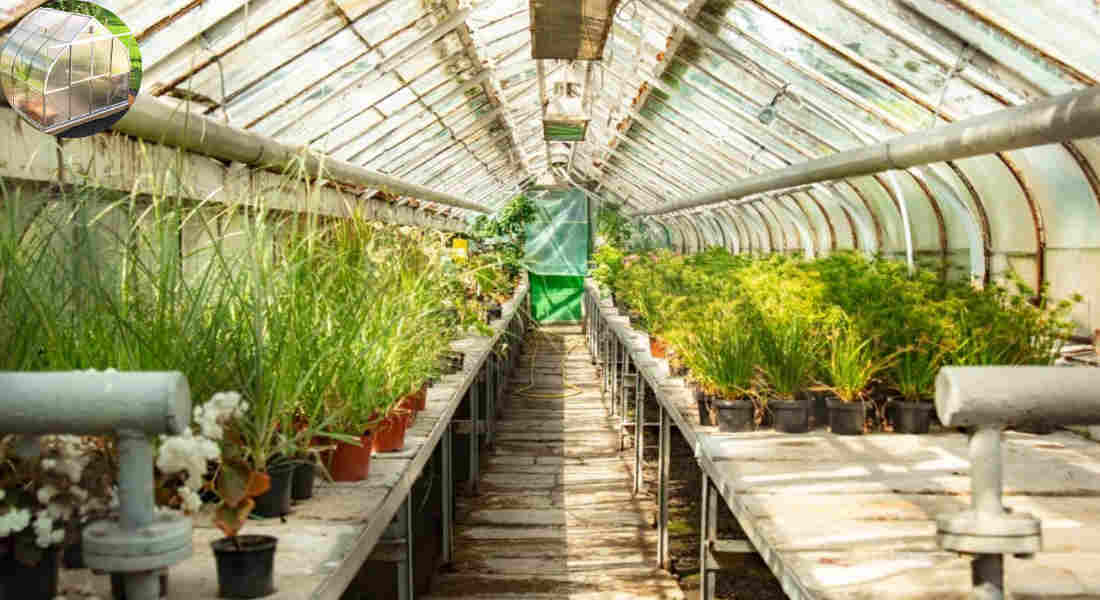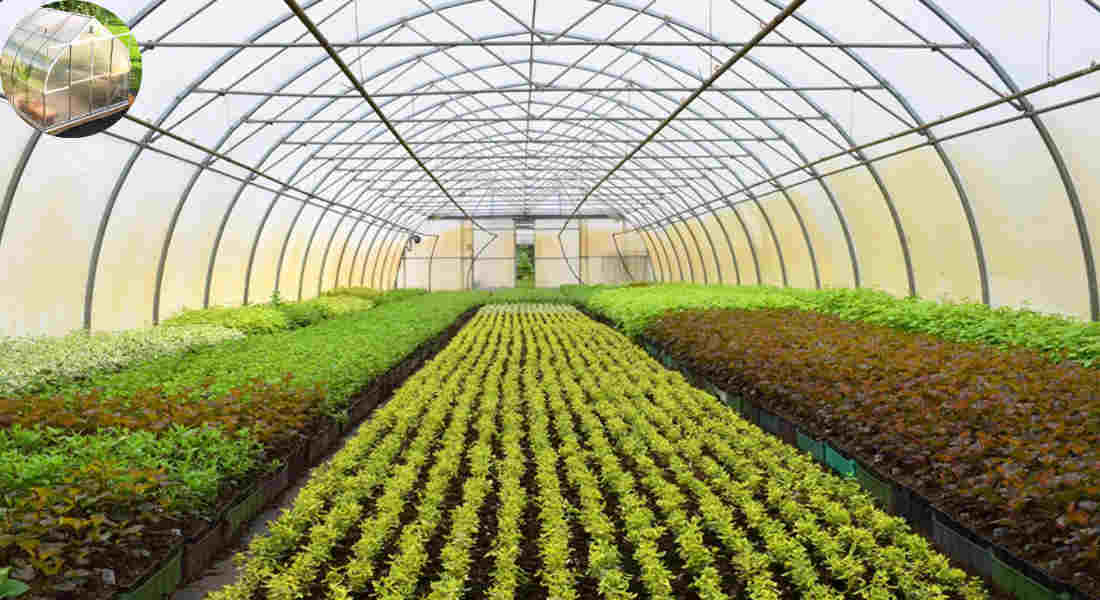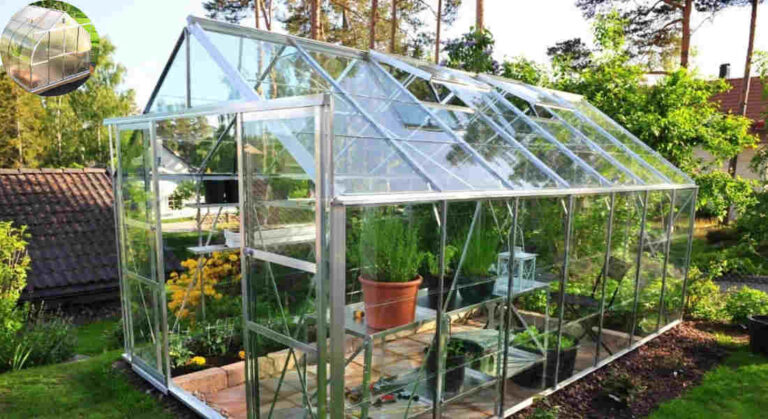A greenhouse works by creating an optimal environment that enhances plant growth through the natural greenhouse effect. It allows sunlight to enter through transparent materials like glass or plastic, which plants and soil absorb and convert into heat. This heat is then trapped inside, raising the temperature and creating a warm, stable microclimate ideal for photosynthesis-the process by which plants convert light, water, and carbon dioxide into food and oxygen. By maintaining warmth, humidity, and protection from harsh weather and pests, a greenhouse extends the growing season and supports healthier, faster plant development. Additionally, proper ventilation ensures fresh air and carbon dioxide supply, further boosting growth and yield. This controlled environment also conserves water and nutrients, making plant care more efficient and productive.
The Science Behind the Greenhouse Effect
Plant growth within a greenhouse is influenced by the greenhouse effect, a natural phenomenon.Sunlight enters through transparent materials, like glass or plastic, warming the interior air and soil.
This heat becomes trapped as it tries to escape back into the atmosphere. With its design, the structure allows maximum light penetration while minimizing heat loss.
As temperatures rise inside, plants benefit from an extended growing season. They receive consistent warmth and protection from harsh weather conditions outside.
This creates an optimal environment for photosynthesis and nutrient absorption.
Understanding this science helps growers optimize their space effectively. With proper management of temperature and humidity, plants thrive better than they would outdoors.
Benefits of Using a Greenhouse for Plant Growth
A greenhouse can be a gardener’s best friend. In addition to providing protection from harsh weather conditions, it creates an ideal growing environment for plants.
Temperature regulation is one of the standout benefits. Greenhouses trap heat during the day and release it at night, providing a stable climate that encourages growth year-round.
With controlled access, you minimize unwanted visitors that could harm your crops.
Light availability also plays a critical role in plant health. Transparent materials used in greenhouse construction allow sunlight to pour in while filtering harmful UV rays.
You can start planting earlier in spring and continue well into fall or even winter with proper heating methods.
These structures offer versatility for various types of gardening—from vegetables to exotic flowers—allowing enthusiasts to experiment freely without limitations imposed by external climates.
You may also read (how to convert your garage for maximum home value).
Factors to Consider When Choosing a Greenhouse
Choosing the right greenhouse involves several important factors. First, consider your available space. The size will dictate what plants you can grow and how many.
Next, think about the style of greenhouse that best suits your gardening goals. Options vary from traditional A-frame structures to modern hoop houses. Each design has its benefits based on climate and aesthetics.
Materials also play a crucial role in functionality. Glass offers excellent light transmission but can be heavier and pricier than plastic alternatives like polycarbonate or polyethylene.
Ventilation is another critical aspect. Good airflow helps regulate temperature and humidity levels, preventing mold growth while promoting healthy plant development.
Don’t overlook accessibility features such as shelving or watering systems. These conveniences can enhance your gardening experience significantly by making it easier to care for your plants daily.
Essential Equipment Needed for a Successful Greenhouse
Creating a thriving greenhouse requires specific equipment designed to foster the best environment for your plants. Start with adequate ventilation systems, as fresh air circulation is crucial for preventing mold and ensuring healthy growth.
Heating mechanisms are essential too. Whether you choose electric heaters or gas-powered options, maintaining an optimal temperature can significantly boost plant health during colder months.
Next, invest in proper lighting solutions. Natural sunlight is ideal, but supplemental grow lights help when daylight hours are short or if you’re cultivating light-hungry species.
Don’t forget about watering systems! Automated drip irrigation saves time and ensures that plants receive consistent moisture without overwatering.
Maximize your space by using a sturdy shelving system.Vertical gardening not only increases capacity but also enhances air circulation around each plant. Together, these elements create a supportive ecosystem where your plants can thrive effortlessly.
You may also read (can i move my sky q box to a different house).
Tips and Tricks for Maximizing Plant Growth in a Greenhouse
To maximize plant growth in your greenhouse, start with proper ventilation. Good airflow prevents excessive humidity and keeps temperatures stable. Consider installing fans or vents for optimal air circulation.
Next, monitor light levels carefully. Different plants have varying light needs. Use shade cloths or reflective materials to manage sunlight exposure effectively.
Don’t overlook watering techniques. It is possible to reduce water waste while providing consistent moisture with drip irrigation systems.Adjust the schedule based on seasonal changes and plant requirements.
Soil quality is crucial too. Regularly test pH levels and nutrient content to ensure a healthy growing environment. Amend soil as needed with organic fertilizers and compost for added nutrients.
Early detection of pests and diseases is crucial.. Integrated pest management strategies help protect plants without harsh chemicals, ensuring healthy growth throughout their life cycle.
Common Mistakes to Avoid When Using a Greenhouse
When venturing into greenhouse gardening, it’s essential to be aware of common pitfalls that can hinder your plant’s growth. One frequent mistake is overcrowding the space. Plants need room to breathe and grow; too many in one area can lead to poor air circulation and increased susceptibility to disease.
Greenhouses can heat up quickly on sunny days, which may stress plants if not properly managed. Investing in ventilation systems or shade cloths will help maintain an optimal environment.
Watering practices often trip up novice growers as well. Overwatering is just as detrimental as underwatering; both can lead to root rot or dehydration. It’s vital to monitor soil moisture levels regularly.
Ignoring pest management strategies can also derail your efforts. Regular inspections for pests and diseases are crucial in maintaining a healthy greenhouse ecosystem.
Failing to rotate crops or replenish soil nutrients leads to nutrient depletion over time, making it harder for plants to thrive season after season. Staying mindful of these mistakes will pave the way for thriving greenhouse gardens filled with lush greenery and vibrant blooms all year long.
You may also read (does a house built in 1979 likely have asbestos).

